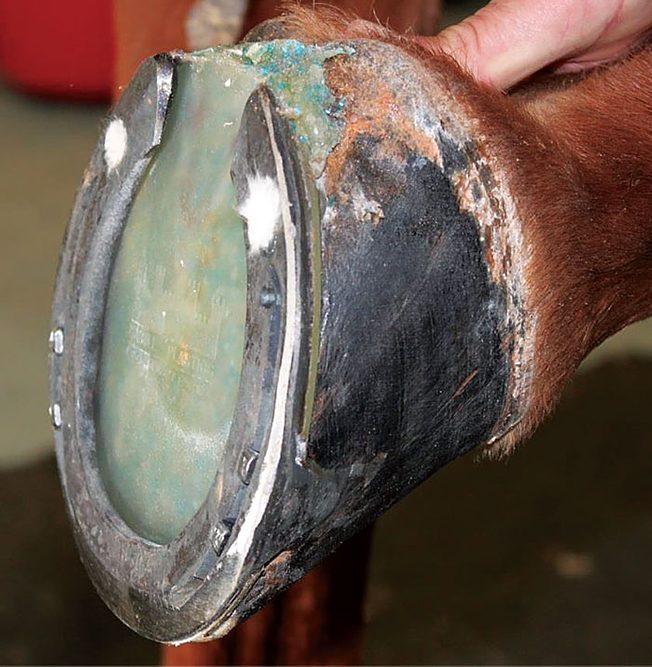While pads provide benefits in many cases, not every pad application is well received by the horse.
“Unfortunately, everything comes with a plus and a minus,” says Travis Burns, CJF (TE, EE), FWCF. “You have to monitor the horse for its feedback and see how it goes.”
What farriers think might be helpful can be perceived by the horse as pressure or pain.
“Oftentimes, we apply a pad to protect the hoof, but if our packing material is too dense, the horse may resent it,” says the associate professor of practice at the Virginia-Maryland College of Veterinary Medicine in Blacksburg, Va. “If you’re putting pressure on an already-compromised area — and that may be anything from insufficient sole depth, to a horse with pain in the navicular apparatus, to a horse that dislikes pressure over the frog itself — you’re going to end up with a horse that resents the pads.”
Burns cautions that pads can also increase overall foot length, thereby altering hoof and limb mechanics.
“When you apply a pad, you are increasing the foot length,” Burns says. “Sometimes that’s your intention, but other times you may inadvertently increase the lever arms circumferentially around the hoof capsule and, ultimately, the distal limb. That can increase stress and strain on the lamellae or the hoof capsule itself.”
In addition to reducing traction, pads may also serve as an unintended barrier. While pads keep unwanted environmental influences out, they may also trap dirt, debris and microbes under the foot.
“When we use pads, we are often using them to protect the hoof from the outside environment,” Burns explains. “But when we do that, we’re also creating an environment. Unfortunately, that environment can be anaerobic, which exacerbates some microbial growth. Anaerobic microbes are responsible for things like thrush, white line disease and abscesses. So, again — using pads comes with positives and negatives, and that’s something we have to weigh out.”









Post a comment
Report Abusive Comment